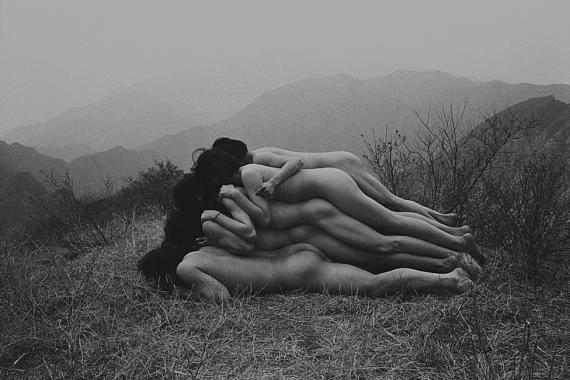
To Add One Meter to an Anonymous Mountain, 1995
© Cang Xin. Courtesy the artist and The Walther Collection, New York/Neu-Ulm
INTO THE UNSEEN
The Walther Collection
Martina Bacigalupo » Em'Kal Eyongakpa » Rotimi Fani-Kayode » YANG Fudong » David Goldblatt » Ana María Gómez López » Santu Mofokeng » Eadweard J. Muybridge » Jo Ractliffe » Felipe Romero Beltrán » RONG Rong » Berni Searle » Munemasa Takahashi » CANG Xin » & others
Exhibition: 24 Oct 2025 – 26 Apr 2026
Tue 16 Dec
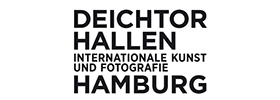
Halle für aktuelle Kunst / Deichtorhallen
Deichtorstr. 1-2
20095 Hamburg
+49 (0)40-321030
mail@deichtorhallen.de
www.deichtorhallen.de
Tue-Sun 11-18
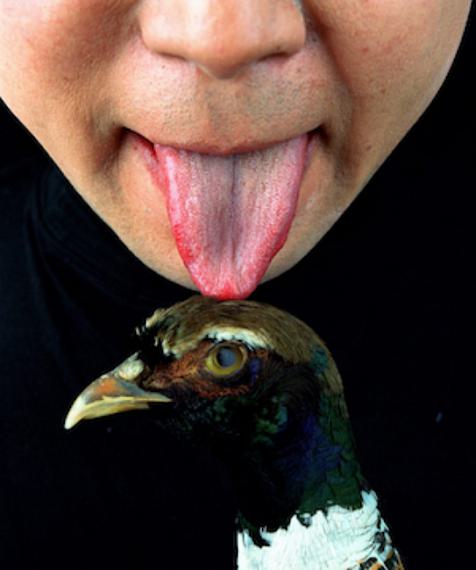
Communication Series No. 2, 1996–2006
© Cang Xin. Courtesy the artist and The Walther Collection, New York/Neu-Ulm
"Into the Unseen"
The Walther Collection
Exhibition: 24 October 2025 – 26 April 2026
Opening: Thursday, 23 October, 7-10pm
THE WALTHER COLLECTION is considered one of the world’s most renowned collections of global
photography. This exhibition marks the final major presentation of the collection in Europe before 6,500 works are gifted to THE METROPOLITAN MUSEUM OF ART in New York. INTO THE UNSEEN challenges visitors to look beyond the visible and make the unseen – the mystical, the repressed, or the elusive – perceptible by activating photography’s audible, tactile, and emotional registers. This multisensory exhibition thus engages critiques of the dominance of vision by charting a more expansive understanding of photography and embracing a new poetics of the unseen.
INTO THE UNSEEN features works by, among others, Cang Xin, Em’kal Eyongakpa, Rotimi Fani-Kayode, Santu Mofokeng, Eadweard Muybridge, Jo Ractliffe, RongRong, Berni Searle, and Yang
Fudong, as well as a new sound work by photographer Felipe Romero Beltrán and a new photo
installation by artist and forensic scientist Ana María Gómez López.
The curatorial concept of the exhibition asks what photography can be beyond detached viewing. Rather than a neutral technology of representation, photography is presented as a medium that generates both connection and resistance. In this way, it eschews any notion of vision as a privileged sensory register and presenting it instead as inseparably linked to a multi-sensory engagement with the world around us.
Unlike a traditional white cube gallery, the exhibition design leads visitors into dark rooms where images float organically and walls release a distinctive scent. Small architectural structures crafted from local Douglas fir create intimate spaces for viewing vernacular photographs, scientific studies, and family albums. The wood has been treated using traditional Japanese Yakisugi techniques, which give it a deep black, shimmering surface with a pronounced sculptural grain. The choice of wall colors, textiles, and colored-infused ceilings challenges the fiction of detached looking by creating sense of embeddedness in the artwork. In this way, the exhibition itself takes a multisensory approach to the installation of artworks
— a curatorial intervention that intensifies the experience of engaging art by activating the full range of our senses.
FREQUENCIES OF DARKNESS
The exhibition’s first gallery shifts from an emphasis on exposure and visibility to a focus on darkness, spirituality, and shadow. Santu Mofokeng’s Chasing Shadows (1996–2014) highlights the “otherworldliness” of images that obscure the boundary between documentation and imagination, while Jo Ractliffe attends to the tension between presence and absence in her Diana Archive (2004), a body of work photographed with toy cameras that harnesses snapshot aesthetics to capture seemingly random everyday scenes in a timeless lyrical texture.
HOLDING EVERYDAY LIFE
The second exhibition theme, “Holding Everyday Life,” centers the photo album as both a private tactile memory object and an embodied practice of collection, arrangement, and display. It highlights the album’s institutional and archival function as well, in particular, the notorious “crime scene albums” of Parisian criminologist Alphonse Bertillon. In contrast, Santu Mofokeng’s The Black Photo Album/Look at Me: 1890–1950 (1997) uses the photo album — displayed using a Kodak slide carousel of studio portraits of Black middle-class families in South Africa — to pose radically different questions and reveal suppressed subaltern narratives.
LISTENING TO THE LAND
Through performance, touch, sound, and photography, the works in the third chapter of the exhibit, “Listening to the Land,” create an intimate connection to landscape and the stories inscribed and encoded in it. Featuring ghostlike figures and saturated surfaces, Em’kal Eyongakpa’s Ketoya Speaks (2016) takes us to southwest Cameroon, a center of resistance during German colonial rule in the early twentieth century, while artist and documentarian David Goldblatt transforms surfaces into a comprehensive portrait of South African society.
TRACING SEDIMENTS
The fourth chapter is dedicated to loss, recovery, and the afterlives of images. At its core is the Lost & Found Project (2011), initiated by Munemasa Takahashi following the 2011 earthquake and tsunami on Japan’s east coast. In the wake of this disaster, the Memory Salvage Initiative collected, digitized, and restored damaged family photographs and returned them to their owners. Takahashi used images too badly damaged to be identified or returned to create a collective visual archive, 1,600 of which are presented for the first time in a haunting formation of images floating in the space.
TASTE, TOUCH, FEEL
The fifth chapter foregrounds sensory experience as an embodied means of accessing the world. In
Communications Series No. 2 (1996–2006), Cang Xin (a member of legendary Beijing East Village Collective) focuses on how taste connects us to the outside world, while Colombian forensic scientist and artist Ana María Gómez López uses performance to subject her body to a radical physical experiment in Inoculate (B semperflorens) (2023–). Similarly, Song Dong and RongRong all test the limits of sensory perception in works that explore the unseen in the human body using the camera as a portal for their journeys and reflections. And a newly commissioned sonic installation by Colombian photographer Felipe Romero Beltrán, A Body That Speaks As a Bird (2025), sounds of the loss of indigenous languages and local dialects by interspersing them with natural sounds that also disappeared as rural populations fled armed conflict and land expropriation.
SENSING TIME
The final chapter of the exhibition features Yang Fudong’s six-channel video work, East of Que Village (2007), which views the world from the perspective of abandoned dogs roaming deserted villages. Long shots create an intense silence interrupted only by the sound of wind, barking dogs, or barely audible conversations. In doing so, the work confronts us with a dystopian relationship to time through the perspective of species struggling to reckon with the aftermath human dislocation.
THE WALTHER COLLECTION
The Walther Collection was founded by Artur Walther who built the collection largely in collaboration with renowned curator Okwui Enwezor. In 2010, Walther opened a dedicated museum campus in Neu-Ulm and in 2011 the Project Space in the West Chelsea Arts Building in New York City. The Walther Collection has been devoted to the critical understanding of historical and contemporary photography, drawing from its expansive holdings of photography and media art from Africa, China, Japan, Europe, and America, as well as vernacular imagery from across the globe. In May 2025, the Collection announced a major promised gift to The Metropolitan Museum of Art in New York. INTO THE UNSEEN is the final major presentation of the collection in Europe.
The exhibition, curated by Nadine Isabelle Henrich, art historian and curator of the House of Photography, and Prof. Tina M. Campt, historian and Roger S. Berlind Professor of Humanities at Princeton University, was developed in close dialogue with Artur Walther.
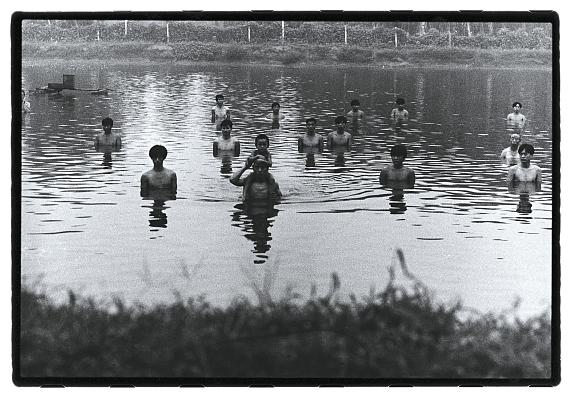
Untitled, from the series East Village Portfolio, 1993-1998
© RongRong. Courtesy Three Shadows Photography Art Center, Beijing and The Walther Collection, New York / Neu-Ulm
"Into the Unseen"
The Walther Collection
Ausstellung: 24. Oktober 2025 bis 26. April 2026
Eröffnung: Donnerstag, 23. Oktober, 19-22 Uhr
Die Walther Collection zählt zu den weltweit renommiertesten Sammlungen globaler
Fotografie. "Into the Unseen" ist die letzte große Präsentation der Sammlung in Europa, bevor 6.500 Werke als Schenkung an das Metropolitan Museum of Art nach New York gehen. INTO THE UNSEEN
fordert die Besucher*innen auf, das Feld des Sichtbaren zu überschreiten, um das »Ungesehene« –
das Mystische, Verdrängte oder Sich-Entziehende – erfahrbar zu machen und dabei die hörbaren,
taktilen und emotionalen Register des Mediums zu aktivieren. Damit greift die multisensorisch
inszenierte Ausstellung die philosophische und fototheoretische Kritik an der Dominanz des Sehsinns auf, um ein neues, umfassenderes Verständnis der Fotografie zu suchen – und dabei eine Poetik des Ungesehenen zu entwerfen.
INTO THE UNSEEN versammelt Werke berühmter Fotograf*innen und Künstler*innen wie Cang Xin, Em’kal Eyongakpa, Rotimi Fani-Kayode, Santu Mofokeng, Eadweard Muybridge, Jo Ractliffe,
RongRong, Berni Searle, und Yang Fudong, ergänzt durch eine neue Soundarbeit des Fotografen
Felipe Romero Beltrán und einer neuen Fotoinstallation der Künstlerin und Forensikerin Ana María
Gómez López.
Das kuratorische Konzept der Ausstellung fragt, was Fotografie über das distanzierte Betrachten
hinaus sein kann. Anstatt als neutrale Technologie der Darstellung wird Fotografie als Medium
präsentiert, das sowohl Verbindung als auch Widerstand erzeugt. Auf diese Weise vermeidet es jede Vorstellung von Sehen als privilegiertem Sinnesregister und präsentiert es stattdessen als untrennbar verbunden mit einer multisensorischen Auseinandersetzung mit der Welt, in die wir eingebettet sind.
Multisensorische Szenografie: Das Ungesehene erkunden
Im Gegensatz zu einer traditionellen White-Cube-Galerie führt das Ausstellungsdesign die
Besucher*innen in dunkle Räume, in denen Bilder organisch schweben und die Wände einen subtilen
Duft verströmen. Kleine architektonische Strukturen aus lokalem Douglasienholz schaffen intime
Räume für die Betrachtung von Alltagsfotografien, wissenschaftlichen Studien und Familienalben. Das Holz wurde mit der traditionellen japanischen Yakisugi-Technik oberflächlich verbrannt, die ihm eine tiefschwarze, schimmernde Oberfläche mit einer ausgeprägten skulpturalen Maserung verleihen. Die Wahl der Wandfarben, Textilien und farbigen Decken hinterfragt die Fiktion des distanzierten Betrachtens, indem sie ein Gefühl der Einbettung erzeugt. Auf diese Weise verfolgt die Ausstellung selbst einen multisensorischen Ansatz – eine kuratorische Intervention, die das Erlebnis der Auseinandersetzung mit Kunst intensiviert, indem sie alle unsere Sinne aktiviert.
Frequenzen der Dunkelheit
Bereits im ersten Raum verschiebt sich der Fokus von Belichtung und Sichtbarkeit hin zu Dunkelheit, Spiritualität und Schatten. Santu Mofokengs Chasing Shadows (1996 – 2014) betont die »Andersweltlichkeit« von Bildern, die die Grenze zwischen Dokumentation und Imagination verwischen, während sich Jo Ractliffe in ihrem Diana Archive (2004) mit der Spannung zwischen An- und Abwesenheit im Bild beschäftigt. Ihre mit Spielzeugkameras fotografierte Serie nutzt die Ästhetik von Schnappschüssen, um scheinbar zufällig gewählte Alltagsszenen in einer zeitlosen, lyrischen Textur einzufangen.
Den Alltag in den Händen halten
Das zweite Ausstellungskapitel konzentriert sich auf das Fotoalbum als privates, greifbares
Erinnerungsobjekt und als verkörperte Praxis des Sammelns, Ordnens und Ausstellens. Es hebt auch
die institutionelle und archivarische Funktion des Albums hervor, insbesondere die berüchtigten
»Tatortalben« des Pariser Kriminologen Alphonse Bertillon. Im Gegensatz dazu nutzt Santu Mofokeng in The Black Photo Album/Look at Me: 1890 – 1950 (1997) das Fotoalbum – präsentiert mit einem Kodak-Dia-Karussell mit Studioaufnahmen schwarzer Mittelklassefamilien in Südafrika –, um radikal andere Fragen zu stellen und unterdrückte subalterne Narrative aufzudecken.
Dem Land zuhören
Durch Performance, Berührungen, Klang und Fotografie stellen die Werke im dritten Kapitel eine enge Verbindung zur Landschaft sowie den darin eingeschriebenen und verschlüsselten Geschichten her. Mit geisterhaften Figuren und tief gesättigten Bildflächen führt Ketoya Speaks (2016) von Em’kal Eyongakpa in den Südwesten Kameruns, ein Zentrum des Widerstands während der deutschen Kolonialherrschaft Anfang des 20. Jahrhunderts. Dem gegenüber fügt der Künstler und Dokumentarist David Goldblatt Oberflächen und ihre Spuren in ein umfassendes Porträt der südafrikanischen Gesellschaft zusammen.
Fotografische Sedimente
Das vierte Kapitel widmet sich dem Verlust, der Rettung und dem Nachleben von Bildern. Im Zentrum steht das von Munemasa Takahashi initiierte Lost & Found Project (2011). Nachdem ein schweres Erdbeben mit einem Tsunami 2011 die Ostküste Japans getroffen hatte, sammelte die Initiative Memory Salvage beschädigte Familienfotos, digitalisierte und restaurierte sie und gab sie ihren Besitzer*innen zurück. Takahashi nahm sich der Bilder an, die zu stark zerstört waren, um identifiziert und zurückgegeben zu werden, und schuf daraus ein kollektives visuelles Archiv. In »Into the Unseen« werden rund 1.600 dieser Fotos – erstmals auf diese eindringlich-poetische Weise – als schwebende Bildformation im Raum inszeniert.
Schmecken, berühren, fühlen
Das fünfte Kapitel erkundet die unmittelbare sinnliche Erfahrung als Zugang zur Welt. In seiner
Communications Series No. 2 (1999) wählt Cang Xin – Mitglied des legendären Beijing East Village Collective – den Geschmackssinn als unmittelbare Verbindung mit dem Außen. Wie die kolumbianische Forensikerin und Künstlerin Ana Maria Gómez López, die sich in Inoculate (B semperflorens) (seit 2023) einem radikalen körperlichen Selbstexperiment unterzieht, testen auch Song Dong und RongRong die Grenzen sinnlicher Erkenntnis. Sie erforschen das Ungesehene, das im menschlichen Körper wohnt, und nutzen die Kamera als Portal für ihre Reisen und Überlegungen. Die eigens für die Ausstellung geschaffene Soundarbeit A Body That Speaks As A Bird (2025) des kolumbianischen Fotografen Felipe Romero Beltrán erzählt vom Verlust der von Naturgeräuschen durchsetzten indigenen Sprachen und lokalen Dialekte, die mit der Flucht der ländlichen Bevölkerung vor bewaffneten Konflikten und Landraub in die Städte einherging – und lässt zensierte ländliche Stimmen wieder erklingen.
Zeit wahrnehmen
Im Schlusskapitel zeigt Yang Fudongs sechskanalige Videoarbeit East of Que Village (2007) die Welt aus der Perspektive zurückgelassener Hunde, die durch verwaiste Dörfer ziehen. Mit langen Kameratakes entsteht eine eindringliche Stille, die nur kurz durch das über die Lautsprecher erklingende Rauschen des Windes, Hundebellen oder kaum hörbare Gespräche durchbrochen wird. Auf diese Weise konfrontiert uns das Werk mit einer dystopischen Beziehung zu Zeit aus der Perspektive einer Spezies, die mit den Folgen der Abwanderung des Menschen zu kämpfen hat.
The Walther Collection
Die Walther Collection wurde von Artur Walther gegründet, der die Sammlung größtenteils in
Zusammenarbeit mit dem renommierten Kurator Okwui Enwezor aufgebaut hat. Im Jahr 2010
eröffnete Walther einen eigenen Museumscampus in Neu-Ulm und 2011 den Project Space im West
Chelsea Arts Building in New York City. Die Walther Collection widmet sich dem kritischen Verständnis historischer und zeitgenössischer Fotografie und stützt sich dabei auf ihren umfangreichen Bestand an Fotografie und Medienkunst aus Afrika, China, Japan, Europa und Amerika sowie auf volkstümliche Bildersammlungen aus aller Welt. Im Mai 2025 kündigte die Sammlung eine bedeutende Schenkung an das Metropolitan Museum of Art in New York an. INTO THE UNSEEN ist die letzte große Präsentation der Sammlung in Europa.
Die von Nadine Isabelle Henrich, Kunsthistorikerin und Kuratorin des Hauses der Photographie, und Prof. Tina M. Campt, Historikerin und Roger S. Berlind Professor of Humanities an der Princeton University, kuratierte Ausstellung entstand in engem Dialog mit Artur Walther.
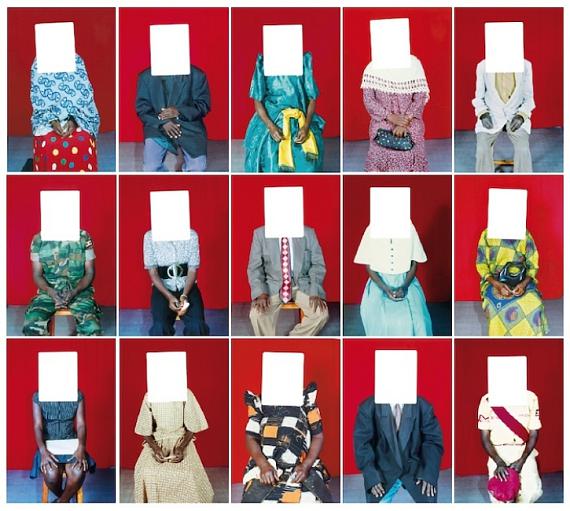
Gulu Real Art Studio, 2011-2012
© Martina Bacigalupo. Courtesy the artist and The Walther Collection, New York/Neu-Ulm
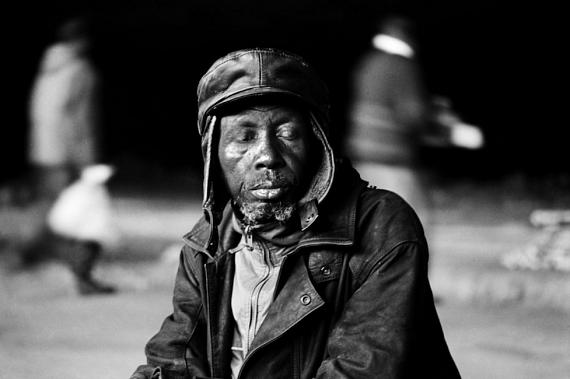
Eyes-wide-shut, Motouleng Cave, Clarens, from the series Chasing Shadows, 2004
© Santu Mofokeng Foundation. Courtesy Lunetta Bartz, MAKER, Johannesburg and The Walther Colletion, New York / Neu-Ulm